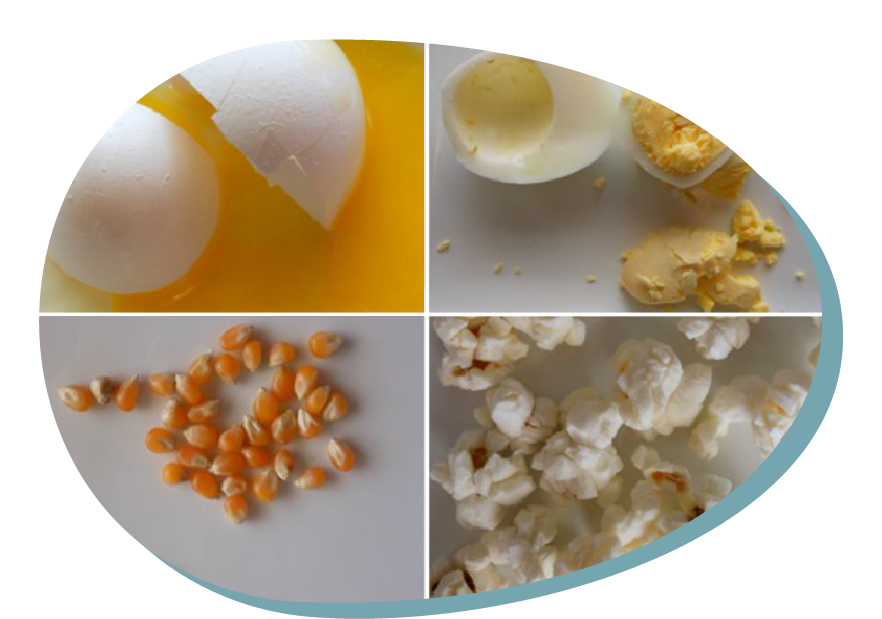How does food change when it’s cooked?
Type of resource: Website – document
Web address https://confidencemeetsparenting.com/kitchen-science/
Language: English
Description
Experiment investigating how food can change when heate.
Scientific concept introduced
Materials and Change: exploring the effects of heating on everyday substances.
Creative and critical thinking
Critical Thinking: analysis and explanation
Mathematical reasoning
Measuring using non-standard units
Counting
Scientific thinking
Investigation
Observation
Prediction
Analysising
Drawing conclusions
Learning how to learn
Following guidelines
Turn taking in groups
Additional
Oral Language skills
Fine motor skills through preparation of food
Pre-reading skills
Collaborative skills through group Work
Safety in the kitchen
https://www.youtube.com/embed/WkNVtVaqrDI?list=PL4VJ0OpU_NAItuz-goQWAsXBHtWriDJCj
How does food change when it’s cooked?
Overall aims
To enable pupils to investigate the effect of cooking on food state
To develop pupils’ skills in observing, analysing and predicting
To develop pupils’ skills in measuring
To develop pupils’ communication and group work skills
To develop pupils’ fine motor skills
Vocabulary – keywords should be understood
Raw, heating, boiling, spinach, egg, carrot, wash, shell, colour, feel, smell, saucepan
Expected learning outcomes (operational aims)
The child will be enabled to:
– prepare vegetables for cooking
– count items including spinach leaves, carrots and eggs
– observe and describe the colour and texture of raw food and cooked food
– draw conclusions from the experiment
STEM skills – to which the learning unit is related to
CORE STEM SKILLS
Asking questions
Observing and making predictions
Analyzing the results of heating/cooking raw food
Drawing conclusions
Counting
Measuring ingredients using non-standard units
ADDITIONAL SKILLS
Hand-eye coordination
Fine-motor skills
Writing
Reading
Oral Language
Following rules of safety
Group work
Teaching methodologies/activity outline
Note: The original investigation explores a range of food, we suggest focusing on exploring 3 types of food only – Spinach, Carrots and Eggs.
Introduction
Begin by asking pupils to name each of the food items (spinach, carrot, egg) and if they have tasted them before. Ask them to identify the vegetables.
Discuss which of these foods they have tasted before.
Then ask pupils to describe the food in raw form, before it has been cooked. Encourage them to use the sense of sight, smell and touch.
Sample questions: What colour is the spinach? Which is the smoothest/hardest food? Does any of the food have a strong smell?
Ask pupils to note their comments on their activity sheet.
Activity
Direct pupils to work in small groups. Ask each group to:
– wash a handful of spinach leaves and place in a saucepan. Add a teaspoon of cold water.
– wash and then place a small carrot in a saucepan of cold water
– carefully place an egg in a saucepan of cold water
Ask a supervising adult to cook each item. Pupils can observe carefully in a safe place.
When the food is cooked, place each groups food item on a plate and leave to cool.
Then ask pupils to describe the food after being cooked.
Sample questions: What colour is the spinach now? Does it look the same? How does it feel now?
Which is the smoothest/hardest food now? Does any of the food have a strong smell now?
Conclusion
In groups, ask pupils thinking of 2 more food items, to describe how they look and feel before and after cooking.
Extension Activity
Ask pupils to make a collage of food pre and post cooking, using old magazines and pictures.
Assessment of learning
Pupil observation sheet
Equipment and materials to be used in learning unit (tools, ingredients etc)
– Water for cleaning vegetables
– Bowls
– Saucepan
Per Group:
– 1 Egg
– Handful of Spinach
– Small carrot
Kind of setting
Kitchen or classroom with cooking facilities (ie hot stove)
References – source
Website: https://confidencemeetsparenting.com/kitchen-science/
Additional supporting printable activity sheet: https://confidencemeetsparenting.com/wp-content/uploads/2013/08/Cooking-Food.pdf
https://www.youtube.com/embed/WkNVtVaqrDI?list=PL4VJ0OpU_NAItuz-goQWAsXBHtWriDJCj
How does food change when it’s cooked?
1. Usefulness for STEM education – integrating content of different disciplines
Cross-curricular character of the resource

The range of S-T-E-M subjects included

The presentation of possibilities of including artistic activities (STEAM approach)

2. Expected learning outcomes
Consistency (links) with preschool core curriculum

Communicativeness of description

3. Methodology of teaching
Clarity, communicativeness of instructions for teachers

Meaningful learning – using practical life problems

Original idea

The level of ease in implementing the methodology to preschool age children

The level of ease in preparing necessary ingredients, materials and equipment needed

4. Sustainability
Ecological characteristics of materials/ results

Supporting healthy eating habits

Low ecological footprint

Possibilities of inclusion (respecting cultural diversity and food intolerances)

5. Class management
Using differentiated forms of work – individual, team work etc.

Individual work

Team work

Whole group
6. Time management

Short activity (10-15 minutes)

Medium activity (20-30 minutes)

Long activity (1 hour or more)

Very long activity (1 day or more)
PDF: https://www.printfriendly.com/p/g/WciiUk

